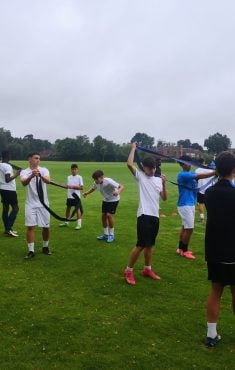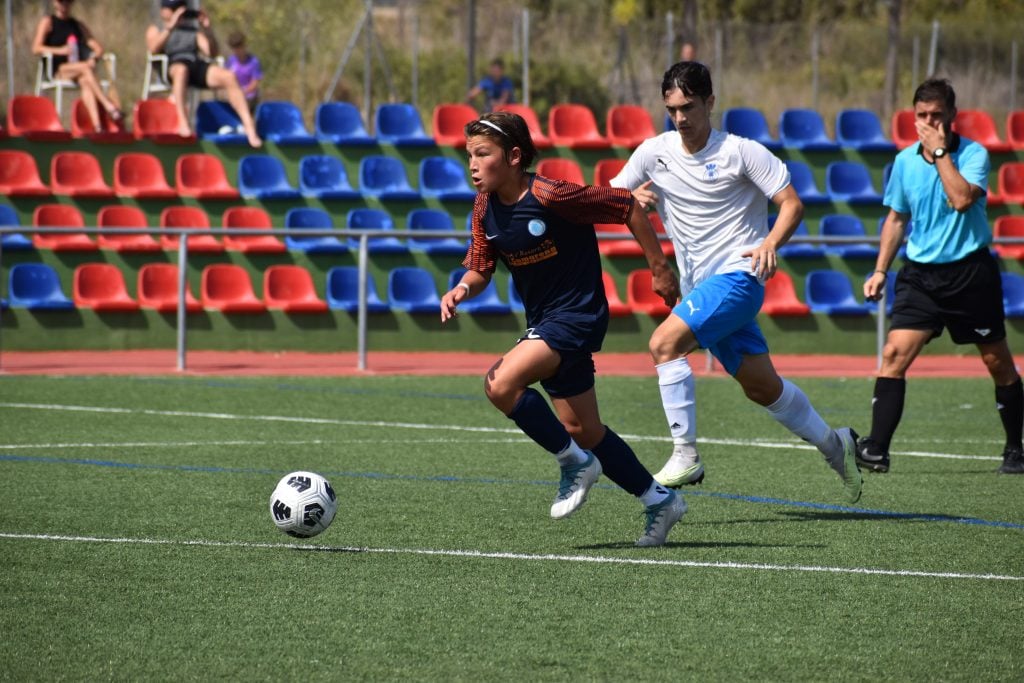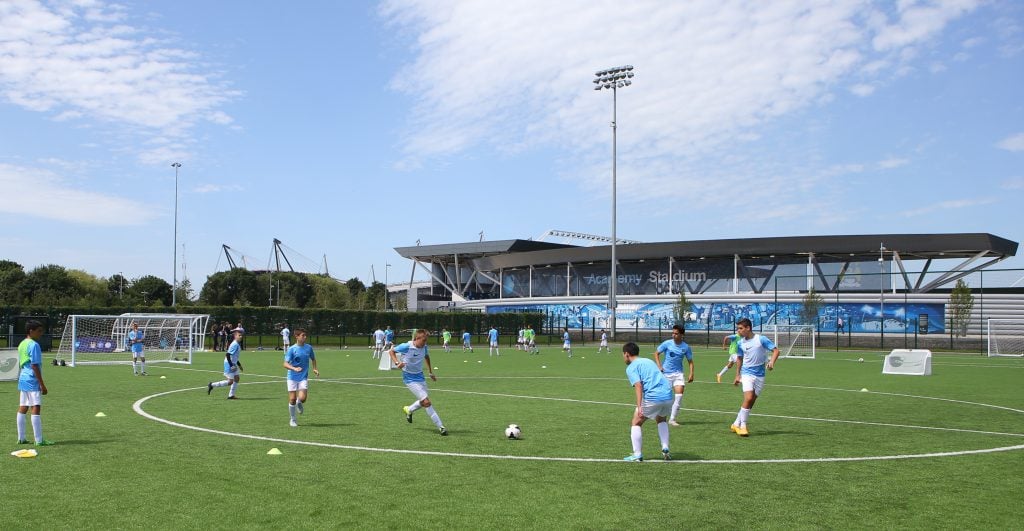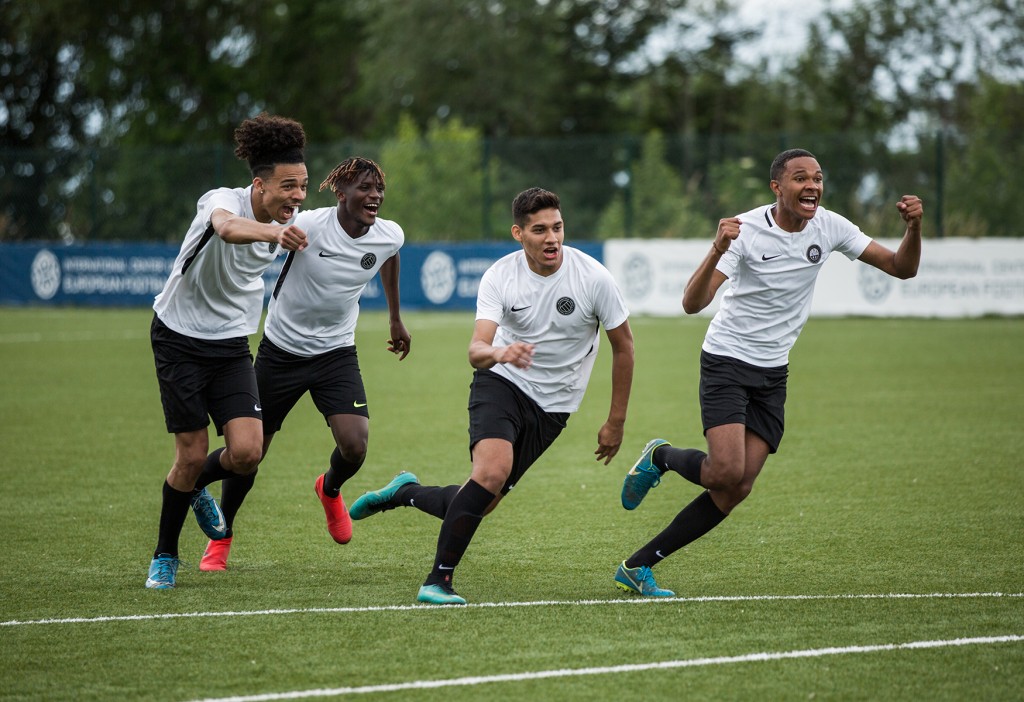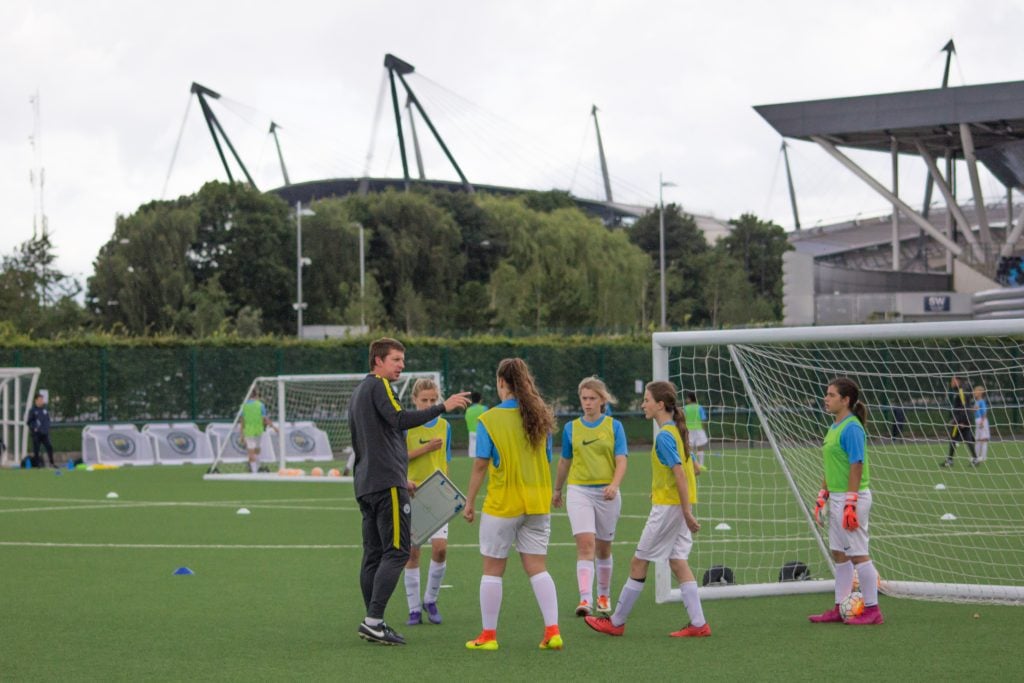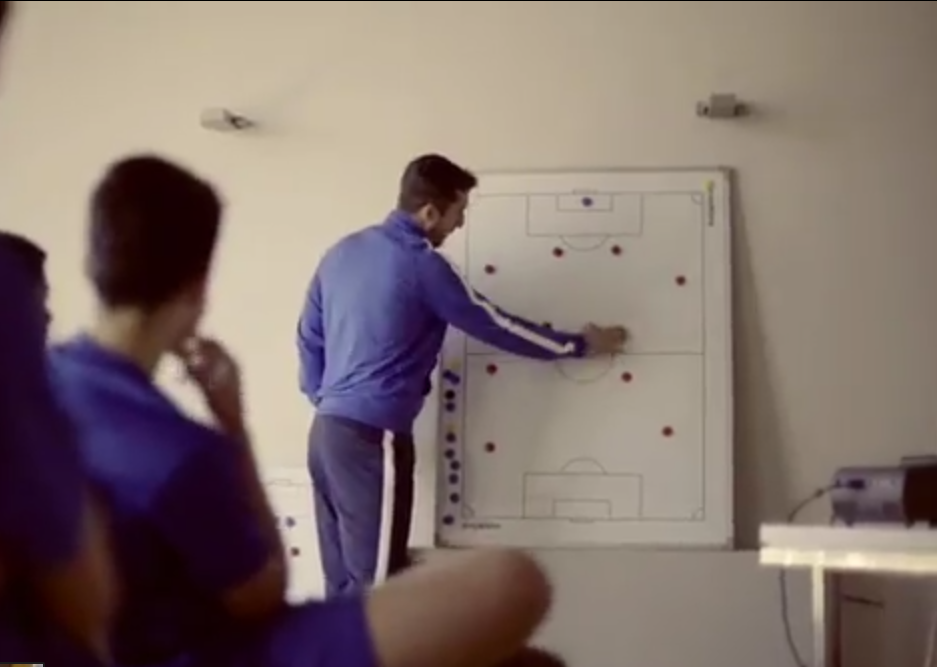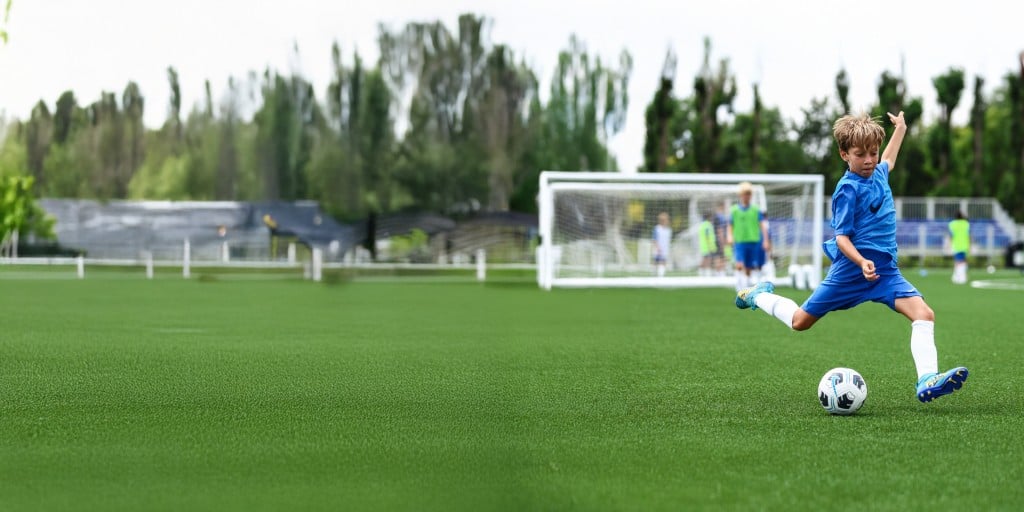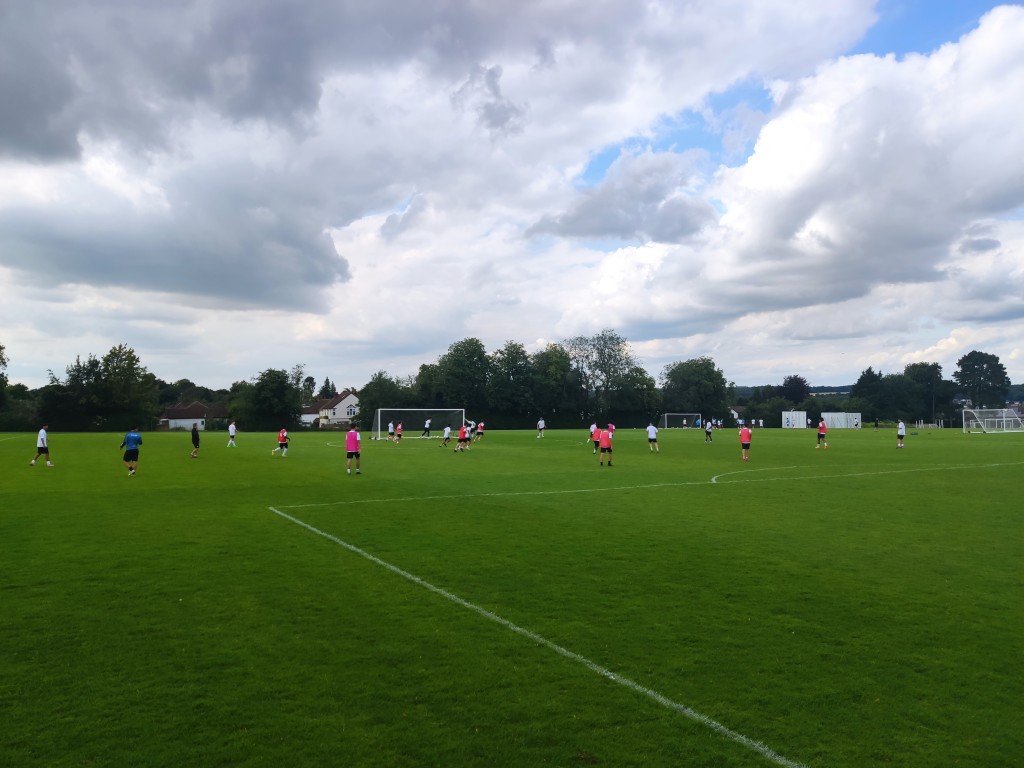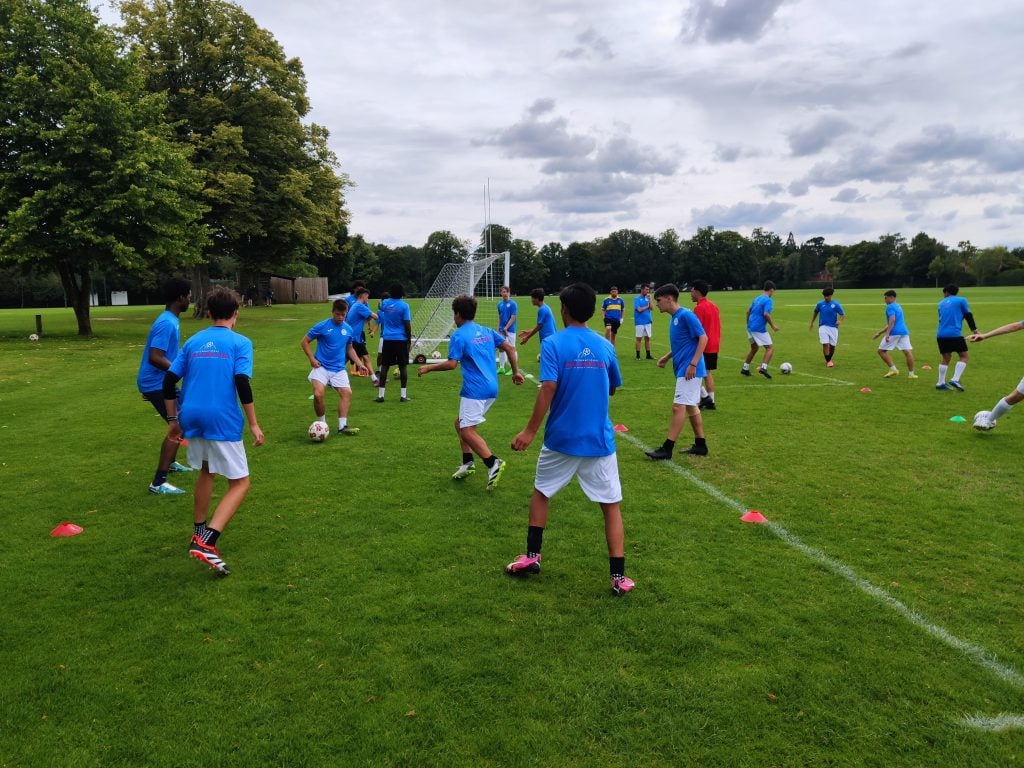
Coaching youth soccer isn’t easy. Youth soccer coaches are responsible for developing their players so they can advance to higher levels as they grow and improve. While every coach has their own unique strategy and coaching style, survey results indicate that youth soccer coaches often overlook key aspects of player development.
At Ertheo Sports and Education, we surveyed close to 40 soccer coaches to find out what they’re doing and, more importantly, what they’re NOT doing. Then, we analyzed the results and created this guide for coaches to present you with 5 easy ways to distinguish yourself from the competition and develop better soccer players.
If you want to get the most out of your players and gain a competitive edge, pay attention to these 5 SECRETS to improve your team’s performance.
1. Educate your players about the importance of proper nutrition
Soccer is one of the most physically demanding sports. If adult soccer players need to eat properly to perform their best, a healthy diet is even more important for youth soccer players. Soccer players participating in youth soccer programs need extra calories, vitamins, and minerals to fuel their growing bodies. They’re also at greater risk of injury than fully-developed players.

Proper nutrition and hydration can provide them with the energy they need and can actually help prevent injury. Nevertheless, only 61% of coaches reported encouraging their players to eat healthily and drink water when coaching youth soccer. If you want to ensure that you’re getting the most out of your players, you should educate both players and parents about the importance of a healthy diet.
Did you know that proper nutrition can help prevent injury?
Proper nutrition for youth soccer players comes down to some key elements. Players should aim to consume a certain number of calories and macronutrients daily depending on their growth rate and energy expenditure. Additionally, they should be loading up on specific vitamins and minerals to help prevent injury as they grow. And, of course, they need to drink a lot of water. Check out the specifics in the section below:
Calories for your youth soccer players
Let’s talk about calories first. Eight to ten-year-old soccer players of average height and weight burn anywhere from 200 to 400 calories per hour of play. Fourteen to 15-year-old soccer players burn between 325 and 670 calories per hour of play. [1] Most high-school players practice for three hours a day which means they could be burning up to 2000 extra calories per day.
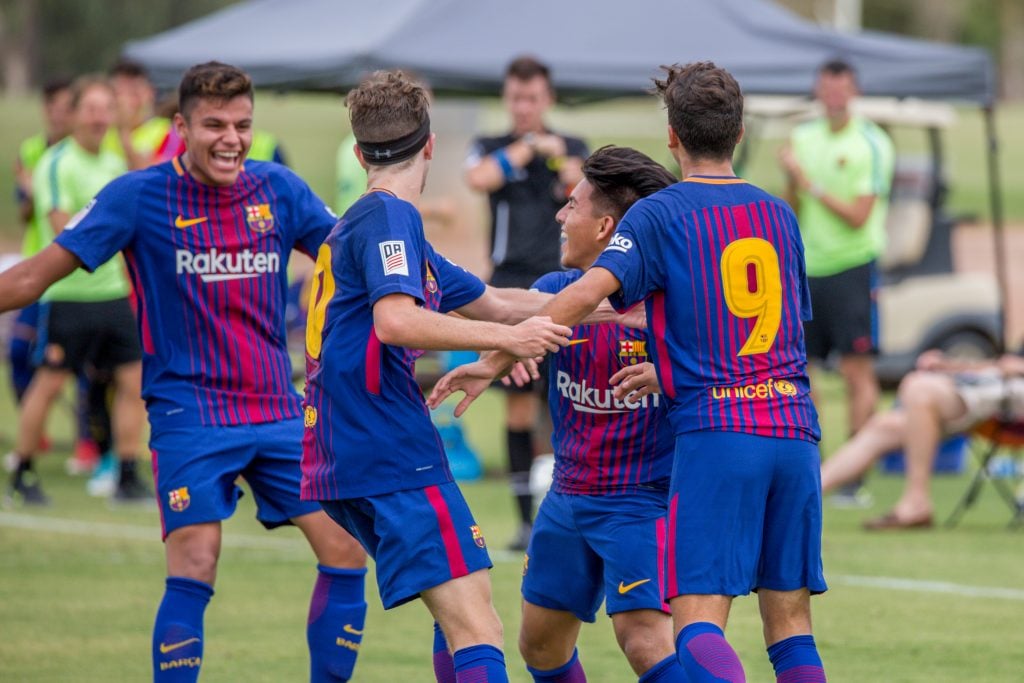
High school soccer players can burn up to 2,000 calories at practice.
Active, growing athletes should never experience a calorie deficit. According to research from the Dietitians of Canada, the American Dietetic Association, and the American College of Sports Medicine, energy deficits can cause short stature, delayed puberty, menstrual dysfunction, loss of muscle mass, and increased susceptibility for fatigue, injury or illness. This is why youth soccer coaching must include nutrition education.
As a youth soccer coach, you should determine how many calories your players are burning and let both players and parents know how many extra calories the young athletes should be eating.
Click here to calculate how many calories your players are burning.
Carbohydrates, fats, and proteins for your youth soccer players
Macronutrients (carbohydrates, fats, and proteins) provide youth soccer players with the fuel they need to make it through a full day of school and then 2 – 3 hours of practice. Talk about a long day. Each macronutrient has a slightly different function to provide your players with the energy they need to perform. When coaching youth soccer, it’s important to consider what percentage of your players’ daily caloric intake comes from carbohydrates, proteins, and fats to make sure they’re performing their best.

Let’s explore the macronutrients. Carbohydrates are an athlete’s main source of energy. Proteins build and repair muscles, nails, hair, and skin. And, fats absorb vitamins and protect vital organs. [3] It would make sense that young athletes need to consume a higher percentage of carbohydrates and protein than the average adult.
Here’s how average American adults eat [4]:
| Macronutrient | Percentage estimate |
| Carbohydrates | 49% |
| Proteins | 17% |
| Fats | 34% |
Here’s how young athletes should eat [5]:
| Macronutrient | Percentage estimate |
| Carbohydrates | 60% |
| Proteins | 15% |
| Fats | 25% |
Based on the charts above, youth soccer players should increase their carbohydrate intake and their protein intake. It may look like you should also encourage your players to eat less fatty foods, but this probably isn’t necessary. Remember, players should also be increasing their overall calorie-consumption. So, if they simply focus on eating a lot more carbohydrates and a little more protein without changing their fat intake, their calorie-consumption should increase and their macronutrient ratio should improve.
The South Jersey Elite Barons Club of the U.S. Soccer Development Academy wrote an excellent article about youth soccer nutrition complete with meal plan recommendations. Click here to check it out.
Micronutrients that prevent youth soccer injuries
Because young soccer players are still growing, they suffer a greater risk of injury than fully developed adults. Young athletes are particularly susceptible to fractures around their growth plates. They also lose flexibility as they grow because their bones grow faster than their muscles leading to more sprains and tears. When coaching youth soccer, make sure your players are consuming enough vitamins and minerals to prevent injury.
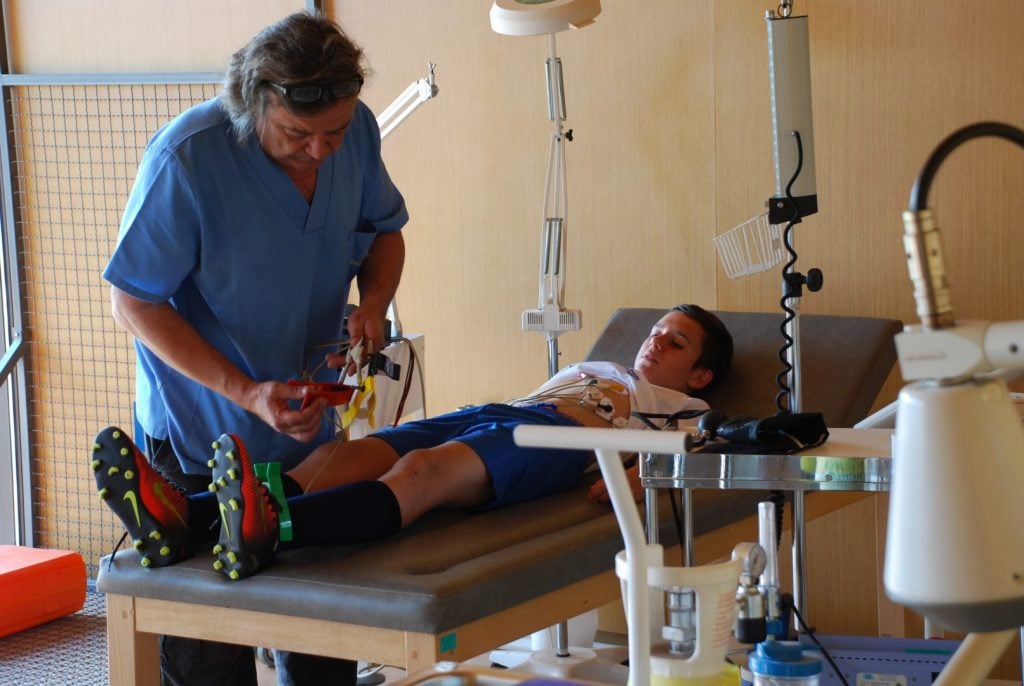
Youth soccer players should consume micronutrients which promote bone health and provide strength and flexibility for ligaments and tendons. Mindbodygreen recommends Vitamin C to provide strength and flexibility to ligaments and tendons. Vitamin C comes from citrus fruits, dark leafy greens, broccoli, and strawberries. They also recommend Calcium, Magnesium, and Vitamin D for bone health. These three micronutrients are found in green leafy vegetables, raw nuts and seeds, cold-water fish, and whole grains.
You might already encourage your players to eat a carb-heavy lunch on game day, but don’t forget to encourage them to add more vegetables, fish, nuts, and seeds during the season to prevent injury.
Proper hydration for your youth soccer players
When coaching youth soccer, encourage your players to drink a lot of fluids, particularly water. Fluids help to regulate body temperature, replace sweat lost during exercise, and keep the muscles hydrated and less susceptible to tears.
In general, dieticians recommend water as the primary source of fluid for athletes. However, some also endorse sports drinks for intense exercise lasting longer than an hour or intensely hot and humid conditions. The ideal sports drink contains about 6 – 8% of carbohydrates and a little bit of salt.
The amount youth athletes should drink depends on multiple factors including climate and the athlete’s height and weight. Athletes sweat more in hotter and humid climates which means they’ll need to drink more water to replace sweat. On average, here’s how much a youth soccer player should drink [3] [5]:
| Timing | Amount |
| 2 – 3 hours before exercise | 1 full bottle of water (600 mL) |
| 15 minutes before exercise | 1/3 to 2/3 of a bottle of water (200 – 400 mL) |
| During exercise (every 15 – 20 minutes) | 1/4 to ½ of a bottle of water (150 – 300 mL) |
| After exercise | 2.5 bottles of water(1.5L) |
| Daily water (fluid) intake | A little more than 4 bottles of water (2.6L) |
Don’t just encourage your players to drink water. Tell them how much water to drink and when. Don’t just tell them to drink energy drinks. Tell them when energy drinks are a good idea, and tell them what to look for when they pick one out. By doing so, you’re decreasing their risk of injury and helping them perform their best.

2. Make sure your players are stretching
There are many reasons why stretching is important. Perhaps the most obvious and important reason is to prevent injuries, but stretching can actually also help athletes perform better on the field. Studies have shown that stretching, when done right, can improve range of motion and flexibility making athletes faster, stronger, and more powerful.
It’s important to do the right kind of stretching at the right time when coaching youth soccer. Dynamic stretching should be done during the warm-up to prepare the body for physical activity, while static stretching should be performed at the end of practice to improve range of motion.
Improve range of motion, flexibility, speed, strength, and power.
Astonishingly, less than half of the coaches who participated in our survey reported incorporating stretching or yoga sessions into their youth soccer coaching for injury prevention and/or recovery. In this section, we’ll discuss when and how to perform dynamic and static stretching. Then we’ll talk about all the benefits of stretching for youth soccer players.
Dynamic stretching vs. static stretching
Dynamic stretching refers to short specific movements that are designed to prepare the muscles for activity. Common dynamic stretching exercises for youth soccer players include high knees, butt kicks, and the open and close the gate dynamic groin stretch.
Static stretching refers to holding a challenging yet comfortable position for a certain period of time. Common static stretches include touching the toes or the butterfly stretch.
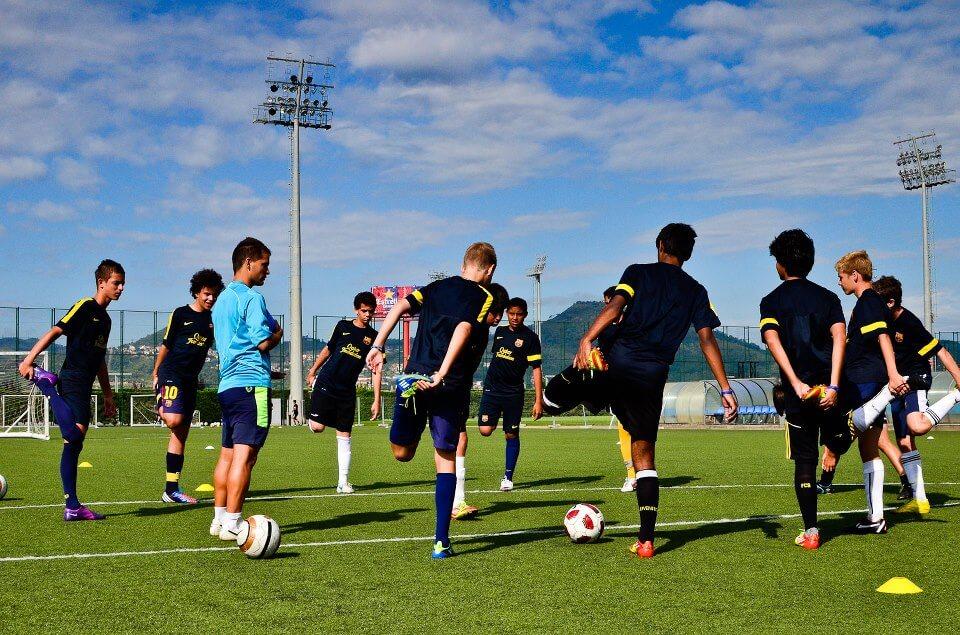
When to dynamically stretch vs. when to statically stretch
It’s extremely important to perform the right kind of stretching at the right time to get the most out of your players and help prevent injury. Dynamic stretching should be performed after warming up to prepare the body for exercise. Static stretches should be performed at the end of the match as a type of recovery exercise for an increased range of motion.
Check out the video below from SimplySoccer for more information about static stretching and dynamic stretching for soccer players.https://www.youtube.com/embed/xgJw6Xu6EhE
Make sure you choose the right kind of stretching for the right time because research shows that the kind of stretching soccer players do before a match greatly affects their performance. [6] Researchers split soccer players into three groups. One group performed static stretches before a match, one ground performed dynamic stretches, and one group didn’t stretch at all. The group that performed dynamic stretches performed the best. The group that didn’t stretch at all came in second place. And, the static stretching group came in last. Save your static stretches for the end of your workout!
Benefits of dynamic stretching pre-workout
We’ve already discussed how dynamic stretching before a practice or a match can improve overall performance. Now, let’s talk a look at the specific benefits of dynamic stretching for youth soccer players.
According to the Sports and Exercise Medicine Institute, benefits include [7] :
- More explosive power – After a dynamic stretching session, the youth soccer player’s muscles and joints are looser and more capable of using their body’s full range of motion for extra power.
- Better coordination and motor skills – Pre-game dynamic stretches will wake up all the muscles the youth soccer player will use during the match resulting in better coordination and motor skills.
- Mental preparation – Dynamic stretches will help the youth soccer player transition from warming up to competing, keeping their muscles warm and their mind ready for competition.
- Overuse injury prevention – see below.
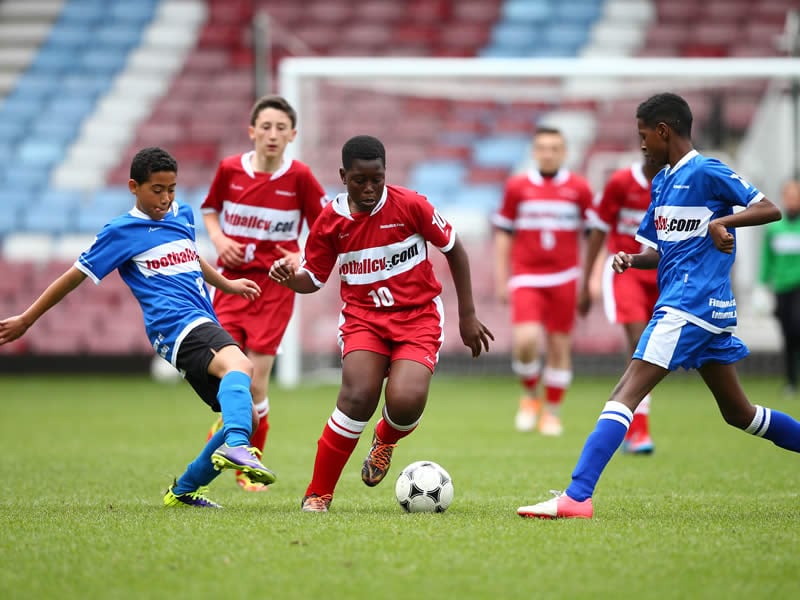
Dynamic stretching prevents injury
Soccer is an intense and repetitive sport. Soccer players can run up to 10 miles a game and sometimes more. Youth soccer players probably don’t hit the 10-mile mark, but some could get pretty close depending on age. With intensity and repetition comes overuse injuries – injuries sustained from repetitive action as opposed to acute injuries which happen from sudden trauma.
Intense exercise, like running 10 miles, sprinting after a ball, or defending a ball from opponents, applies stress to the body. The body adapts by thickening and strengthening the tissues involved in the activity. When youth soccer players engage in too much intense exercise without giving their body the change to adapt, overuse injuries occur. [8]
A proper warm-up complete with dynamic stretching is one of the best ways to prevent overuse injuries. By warming up the muscles and stretching dynamically before engaging in intense exercises, athletes give their bodies time to adjust to the stress they’re about to put on their bodies. They also increase muscle flexibility so they don’t continue to put pressure on tight muscles during an extended period of time. [9]
Ankle sprains are one of the most common overuse injuries for youth soccer players. Scroll to the bottom of this page to read more about how stretching can prevent ankle sprains.
Static stretching post-exercise
There is still much debate regarding the benefits (or lack thereof) of static stretching post exercise. Researchers seem to agree that static stretching can increase an athlete’s range of motion, preventing injuries in the form of pull, strains, and tears. Essentially, if a soccer player’s hamstring is more flexible and can extend further, it’s less likely that they’ll tear it.
Increase range of motion with static stretching.
For a long time, static stretching was believed to prevent muscle soreness or delayed onset muscle soreness. Recent research indicates that static stretching may prevent soreness but only by four points on a scale of 1 to 100. [10] So, maybe static stretching can prevent soreness but not by much. That being said, there is no evidence that static stretching at the end of a workout or match is actually bad for athletes, and feeling four points better is better than feeling 0 points better, right?
Plus, there are other benefits to post-match static stretching when coaching youth soccer. For example, stretching releases dopamine – the feel-good neurotransmitter associated with positive feelings and good sleep. [11] So, why not discuss your team’s performance while leading them through some seated static stretches? You’ll send them home in a better mood.
3. Incorporate pool time for recovery
Speaking of stretching and recovery, only 13% of coaches in our survey reported using pool time to help their players recover from tough practices and games. Not every youth soccer coach has access to a swimming pool for their team. But, if you do, it’s a good idea to incorporate swimming into your routine as a form of active recovery.

How can pool time improve your players’ recovery time?
Recovery doesn’t have to mean your players should rest on the couch in front of the TV. On the contrary, active recovery methods like swimming can help your players recover faster. A study at the International Journal of Sports Medicine found that athletes who hit the pool for a moderate workout on recovery days instead of resting actually recover faster. [12]
The key to a speedy recovery is increasing blood flow to damaged and sore muscles. Blood cells deliver oxygen to the muscle tissue and remove waste products like carbon dioxide. So, the idea is to increase blood flow to your players’ sore muscles without intensifying the soreness or swelling. Because of the properties of water, swimming is the perfect solution.
Get their blood flowing with some pool time.
First of all, water is buoyant which means body weight is reduced significantly when submerged in water. With less weight to carry, the soccer player’s risk of injury is significantly reduced.
Secondly, water provides constant resistance. This means that while soccer players swim, they’re pushing against the force of the water and strengthening their muscles, some of which aren’t strengthened by traditional soccer practices on land.
Check out this article from BridgeAthletic for more information about how the occasional swim practice can help your youth soccer players.
For a simple swimming workout to build your players’ strength, click here.
4. Mindfulness meditation exercises to improve mental toughness
We also asked coaches who participated in our survey about different strategies they might have for encouraging mental toughness in their players. We found that absolutely zero coaches yell at or criticize their players in an attempt to toughen them up. This is good. On the contrary, coaches prefer to teach their players to visualize positive outcomes. They also encourage their players to try new things and make mistakes because mistakes are a part of learning. This is really good.
Positive visualization and support are definitely great ways to improve mental toughness, and we’re happy with these results. However, very few coaches reported using any kind of mindfulness meditation for athletes when coaching youth soccer.
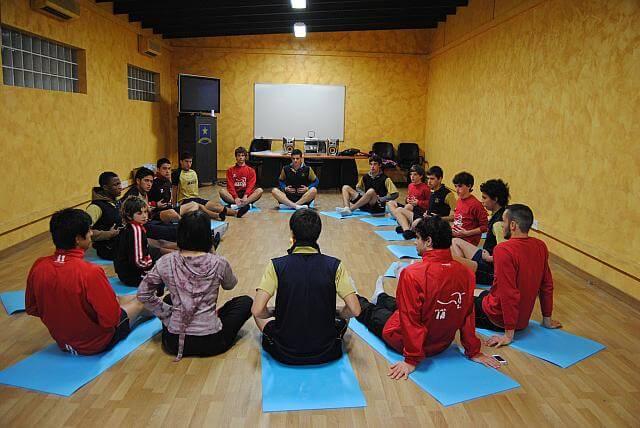
Mindfulness meditation exercises are a great way to improve your players’ mental toughness, decrease any sports performance anxiety they might experience, and increase their overall performance on the soccer field.
First, let’s define mental toughness
Dr. Goldberg, Sports Performance Consultant and internationally-known expert in peak sports performance, defined a mentally tough athlete as having the following characteristics:
- Calmness under pressure
- Unfazed by competition or conditions
- Amazing concentration
- Tunnel-vision focus
- A winning attitude
- Open-mindedness and good work ethic
- Unbreakable self-confidence
A mentally tough athlete is concentrated and focused, free of sports performance anxiety, and has a great attitude based on self-confidence and a willingness to make mistakes and learn. Let’s take a look at how meditation can help your youth soccer players improve all these qualities.
Mindfulness meditation can improve your players’ concentration and help them get in the zone
Multiple studies have shown that mindfulness meditation significantly improves attention. [13] Don’t forget many of your youth soccer players have complete lives outside of soccer where they have tests, school projects, and homework, and have to balance a social life and family life. Not to mention, many of the most talented and passionate players also stress out about soccer and their performance.
It’s the best way to alleviate stress and increase focus.
Mindfulness meditation exercises are designed to quiet the mind. By taking 10 minutes at the start of practice to go through some mindfulness meditation exercises with your players, you’ll help them to quiet their mind and improve their concentration and attention during practice.
Additionally, athletes who practice mindfulness meditation consistently are more likely to get in the zone and experience the state of flow while performing. This flow state leads to tunnel-vision focus and helps athletes perform at their full potential.
To improve concentration and overall sports performance, it’s a good idea to meditate with your players at least once a week.
Mindfulness meditation can help reduce sports anxiety
As mentioned earlier, many soccer players suffer from sports performance anxiety. This could be from added pressure they feel performing in front of a crowd or because they put an enormous amount of pressure on the outcome of the match. Either way, negative self-talk both creates and exacerbates the problems, and mindfulness meditation has been proven to quiet this negative self-talk and reduce anxiety.

Meditation can teach your youth soccer players to recognize their negative thoughts as nothing more than thoughts. Then, they can decide to simply let these thoughts go without allowing the negative thoughts to affect their performance. That way, when it’s game time, they’re completely focused on the task at hand and ready to perform up to their full potential.
Click here to learn more about how mindfulness meditation for athletes can help your youth soccer players play up to their full potential.
5. Play young players in multiple positions
Finally, we asked coaches how they choose their players’ positions. Most coaches choose where to play their players based on their unique strengths (55%). Absolutely zero coaches in our survey reported letting their players choose their own positions. The remainder of coaches (45%) reported constantly switching their players’ positions to develop more versatile players.
While 45% isn’t particularly low, if coaches knew all the benefits of playing players in multiple positions, maybe more coaches would do it when coaching youth soccer. Here are all the benefits:
Increase empathy toward other players
Soccer is a team sport which depends on teamwork, communication, and, empathy. Empathy is a big one that many youth soccer players forget. Empathy should be an important factor in players’ decision-making on the pitch.
Here’s an example.
Midfielders are generally responsible for sending through-balls to strikers. The through-balls should be sent with adequate power and speed to put the striker in a position to beat defenders. If the ball is too fast and too hard, the striker has two decisions – either run after an impossible ball and waste energy or watch it roll out of reach.
Now, if the striker decides not to chase the ball, the midfielder has two options – either apologize for sending the ball too far, or get annoyed at the striker for not chasing the ball down. If the midfielder has ever been a striker, they’d go for option one because they know how it feels to be sent on a goose chase after a ball.
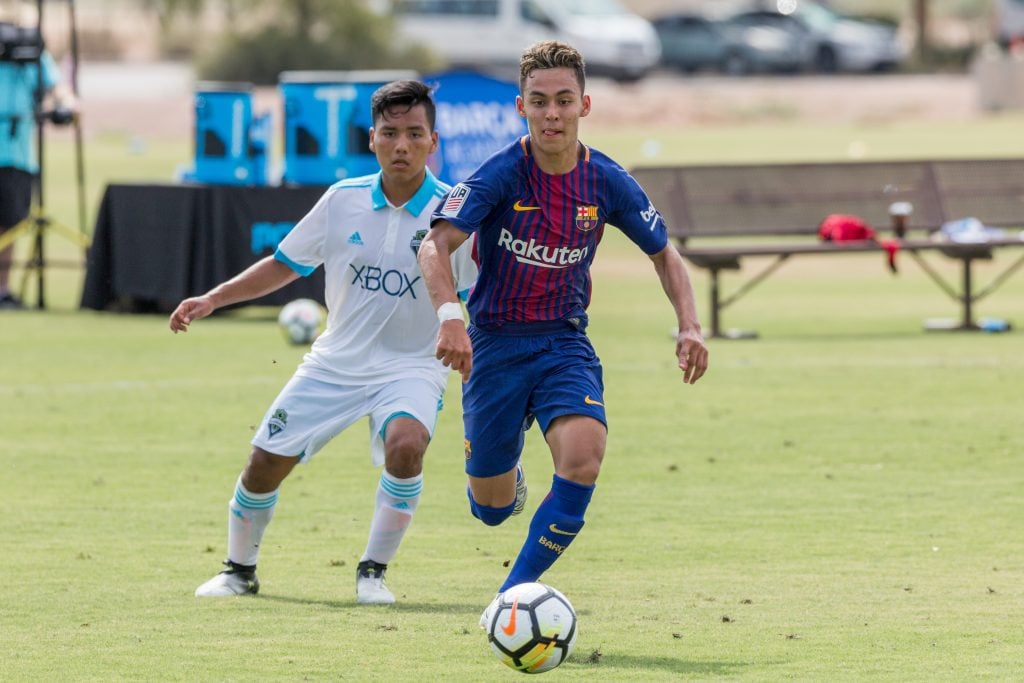
By apologizing, the midfielder expresses empathy and takes responsibility for their mistake. This creates necessary mutual respect between players. This is just one of the countless examples of how empathy can build respect between players. Playing players in multiple positions is a great way to build empathy among players when coaching youth soccer.
Better spatial awareness in the field
Playing in multiple positions on the field also gives players better special awareness – an absolutely necessary skill to achieve success in soccer. By playing in multiple positions, players learn how to move to create more space.
For example, central players know quite well that space gets really crowded in the middle when wingers don’t play on the line. If your wingers are having some difficulties staying wide, play them in the center for a game or two. They’ll realize quite quickly that wingers are useless if they’re not hugging the line.
These examples also occur in many positions across the pitch. The more you play your players in multiple positions, the more they’ll understand space and how to use it to their full advantage.
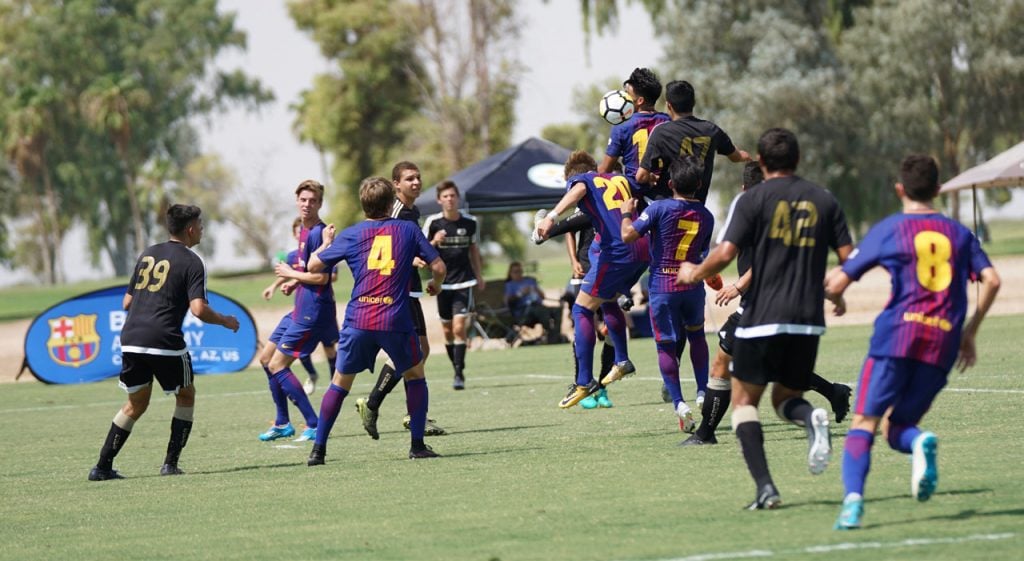
Increase your players’ future opportunities
This benefit is a bit more obvious than the others but worth mentioning. By playing your players in multiple positions, you’re increasing their future opportunities and chances for success.
First of all, you might discover that you were wrong about where a player should really be playing. Maybe someone who you thought would be a superstar left-back is actually better as a left wing. You can never really know until you try your players in multiple positions.
You can’t know the best position for a player until you try them all.
Secondly, you’ll give them more opportunities as they move up the ladder to a new, higher level club. One day, your youth soccer players will probably leave you; they’ll either quit or move up to a higher level club. The hope is that they move up to a better club, right?
But, what if your player is a center back and the new club isn’t looking for any center backs at the moment? Should your player be forced to quit because they don’t have experience in any other position? No. This is why it’s vital to play your players in multiple positions when coaching youth soccer.
Use these tips to beat your competition
Youth soccer coaches have a difficult job. Not only do they have to teach the game and how to play each position, but they’re also responsible for overall player development. Our survey results indicate that youth soccer coaches might spend too much time preparing exercises and teaching tactics and technique, and not enough time thinking of creative ways to develop their players.
In this guide Coaching youth soccer | 5 SECRETS to improve your team’s performance, we’ve discussed the importance of nutrition education, dynamic stretching, mindfulness meditation exercises, and playing your players in multiple positions. We’ve also discussed how pool time could help your players experience a speedier recovery and get them back on the pitch in less time.
These are all extremely useful tips that our survey results have indicated that other youth soccer coaches are NOT doing. This means that if you implement them into your practice routines, you’re sure to develop the best players in the league.
Good luck!
We’d love to hear your feedback.
Reading suggestions:
Mindfulness meditation for athletes
20 Soccer drills to practice in pairs
Discover great youth soccer programs around the world
References
- https://captaincalculator.com/health/calorie/calories-burned-playing-soccer-calculator/
- https://www.cdc.gov/nchs/fastats/diet.htm
- https://www.sjeb.org/page/show/1225511-soccer-nutrition
- https://physioworks.com.au/injuries-conditions-1/overuse-injuries
- https://consumer.healthday.com/encyclopedia/exercise-and-fitness-18/misc-health-news-265/preventing-overuse-injuries-645902.html
- https://www.ncbi.nlm.nih.gov/pubmed/21735398
- https://journals.sagepub.com/doi/abs/10.1177/0956797610371339

